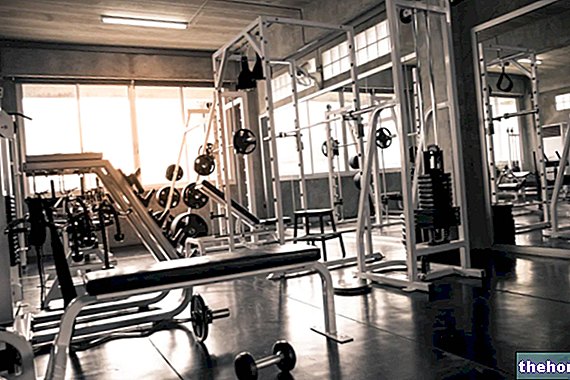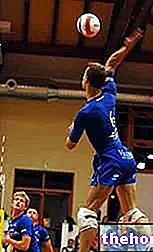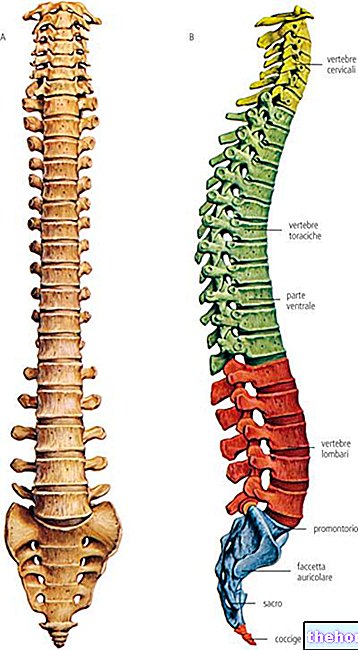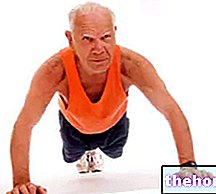Rehabilitation in water and Hydrotherapy: Benefits
Hydrotherapy and rehabilitation in water have recently become part of the rehabilitation protocols in the orthopedic and sports fields.

Hydrotherapy is indicated both as a means of physical preparation for surgery and as an effective rehabilitation tool in the post-operative rehabilitation phase. In the latter case, rehabilitation in water usually begins after desuturation, representing a very important treatment when traditional exercises are contraindicated.
Although rehabilitation programs are often limited to making the patient perform exercises very similar to those performed in the gym, to set up a correct rehabilitation program in the water you need to know some very important principles, such as buoyancy, viscosity and pressure. hydrostatic. This knowledge will then be integrated with each other and adapted to the patient's problems and the objectives of the therapeutic program.
PHYSICAL PRINCIPLES
The Principle of Archimedes: a body immersed in a liquid receives a hydrostatic thrust from the bottom upwards equal to the weight of the displaced liquid. Consequently, when we immerse ourselves up to the navel, our weight is apparently reduced by about 50 % to decrease up to 90% when the dive reaches the shoulders.
This push allows you to resume walking exercises earlier, lightening the weight on the joints and improving the circulation of the cartilage tissue. In water there is less activation of the receptors that control postural tone, in the spinal muscles there is a reduction in tension from 1.8 kg / cm² in air to 0.79 kg / cm². Thanks to this principle we can recover the motor pattern of walking earlier than we can in the gym, obtaining a better and earlier re-education to movement.
Viscose reaction: it is the reaction that a liquid opposes to a body that moves inside it (resistance). Water is in fact denser than air and for this reason provides greater resistance to movement. Thanks to this principle we can strengthen the muscles without using additional overloads and weights. This resistance increases as the speed of movements increases and the surface of the body segment that we want to move increases. For this reason, if we hold objects with more or less large surfaces in our hands, with the same density, we can modulate the difficulty of the exercise as we wish. .
Hydrostatic pressure: depends on the water level (it increases with increasing depth). This pressure is exerted perpendicularly in every point of the body surface, improving balance and proprioception (ability to regulate posture thanks to the coordination of an adequate motor response to external variations). The proprioceptive training is, not surprisingly, one of the aspects more important than rehabilitation. The hydrostatic pressure also makes water an excellent means of aerobic conditioning by improving the efficiency of the digestive (especially renal), respiratory and cardiovascular systems.
Temperature: heat increases the vascularization of the tissues thanks to the direct and indirect stimulation of vasodilation. Usually the water in the rehabilitation pools is kept at a slightly higher temperature (31-35 ° C) than in traditional pools.This allows to take full advantage of the vasodilating properties of heat which improves tissue oxygenation, promoting muscle recovery even from chronic irritative states such as low back pain (thanks to the combined action of heat and hydrostatic pressure, the blood flow to the muscle increases in fact by 225% when diving up to the neck). The water temperature should always be kept at these temperatures to avert the risk of heart attacks in predisposed individuals.
WATER REHABILITATION: water weight in relation to the level of immersion
Up to the neck
Main advantages of water rehabilitation
- The decrease in the force of gravity makes the movements more natural and less stressful for the joints, allowing the execution of unthinkable dry movements.
- The resistance offered by the water is gradual, without dead spots; this allows to maintain a uniform muscle tension during the movements, favoring the recovery of muscle tone and flexibility.
- You don't need to be an expert swimmer to be able to perform rehabilitation exercises. In the tanks intended for rehabilitation, the water level does not normally exceed 120 cm and there are still small tools to help float.
Set up a rehabilitation program in the water
The rehabilitation program will be set up following a "careful assessment of the patient's needs and of the objectives set.
In principle, re-education in water, like many other sports and rehabilitation activities, consists of two or three weekly sessions for a variable period in relation to the degree of individual disability.
TECHNIQUES AND EXERCISES
Rehabilitation in water consists in making the patient perform various exercises, many times the same ones that are performed in the gym, with the body partially immersed in water. By dividing these exercises into four main categories we can talk about exercises aimed at improvement:
muscle tone (exercises with open kinetic chain, eccentric or concentric)
joint mobility and balance (stretching exercises, active / passive range of motion exercises, proprioceptive exercises)
and the recovery of motor patterns (walking / running in suspension, pedaling, leaps, leaps, etc.)
and to the recovery of the sporting gesture (closed kinetic chain exercises in shallow water, jumps, skips, lunges, lateral movements, etc.
To increase the difficulty of the movements, as we have seen, it will be sufficient to increase the amplitude, the speed or use equipment that creates resistance. You can also play on the degree of depth of the water, decreasing it as the patient regains the lost functionality. tolerating higher loads.
OPEN AND CLOSED KINETIC CHAIN EXERCISES: Open kinetic chain exercises such as leg extension are usually performed with the body segment completely immersed in water. These exercises allow you to selectively strengthen a single muscle group and improve the mobility of a single joint. For this reason they are usually employed in the initial stages of the rehabilitation program.
Closed kinetic chain exercises, usually performed in shallow water, work several muscle groups and joints at the same time, keeping the distal extremities (usually the feet) resting on the bottom of the pool. Examples of closed kinetic chain exercises are push-ups. on legs and lunges This type of exercise, being not very specific and quite demanding, is used only in the final stages of re-education for movement or sporting gesture.
WATER REHABILITATION FOLLOWING DISTORTION OF THE ANKLE
Proprioceptive re-education; the patient is invited to walk along the pool keeping a floating board under the foot in order to create a situation of continuous instability during the various phases of the step.
Muscle strengthening; exercises with the step, flexion-extension of the legs with the support of a float, freestyle swimming with fins in such a way as to increase the resistance of the water, walking with tools that increase the resistance of the water in the specific of the gesture and movements of adduction, abduction and flexion-extension of the leg from standing position.
Gesture recovery; we will perform various types of walking, forward, backward, sideways, running in three directions, leaps, hops and all the other situations that can be encountered during the patient's return to activity. All these exercises may undergo variations such as, for example, for walking, walking forward before exasperating the knee flexion almost touching the abdominal area, or keeping the legs rigid.
WATER REHABILITATION AFTER ANTERIOR CRUCIAL LIGAMENT RECONSTRUCTION
A typical session in the pool includes an initial phase with a warm-up that includes the pendulum at the edge of the pool and exercises for the hip muscles. The next exercise uses a floating tube, to imitate the movement of the bicycle. Movements are performed to extend the knee and exercises preparatory to loading. The therapist's task is to correct walking, gaits, foot strokes with the help of the tablet, running in place or in suspension, triple extension with the life buoy, flexed knee extension first without then with fin, jumps, lateral slips, changes of direction, swimming with short and long fin.
Therapy or rehabilitation?
Water rehabilitation is part of the larger family of aquatic therapies. In fact, in water, it is possible not only to restore the best joint and muscle functions after an accident, but also to perform specific forms of exercise to prevent the disease or to treat chronic idiopathic symptoms such as low back pain. These exercises are particularly suitable for those heavily overweight subjects with movement difficulties linked to obesity, arthritis, recent fractures or sprains. In most of these cases there is a marked improvement in muscle tone and joint range after an adequate therapeutic program. The patient, often elderly, thus acquires greater motor control which, by improving balance, removes the risk of falls and slows down the functional decline linked to aging.
If used correctly, aquatic therapy is also a very effective tool to complement the normal workouts of athletes who can thus avoid overtraining injuries. In these cases the water temperature should not exceed 28-30 ° C. The stretching routine is more effective if performed in the rehabilitation pool where the temperature reaches 32-35 ° C.
Contraindications
Rehabilitation and aquatic therapy, as we have seen, represent the ideal activity for many subjects. However, in some cases, water exercises can be contraindicated. This is the case, for example, of subjects suffering from advanced diabetes, ischemic heart disease ( especially if the water temperature is too cold), fever, incontinence, infections and cutaneous mycosis. In other situations, for example for patients suffering from non-advanced osteoporosis, it is advisable to keep traditional forms of exercise out of "water. For all these reasons, it is a good idea to seek the advice of a doctor before embarking on a therapeutic program in the water.
- outcomes of fractures
- sprains, dislocations
- rotator cuff pathologies
- muscle toning in preparation for surgery
- back pain (low back pain, sciatica, hernia, etc.)
- cervical pains
- arthritic pains
- advanced osteoporosis (if early it is better to focus on weight-bearing exercises such as dancing, walking, etc.
- diabetes
- infections
- mycosis
- hypersensitivity to chlorine
- fever
- urinary incontinence




























